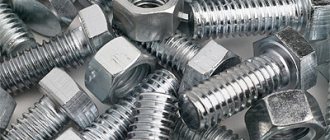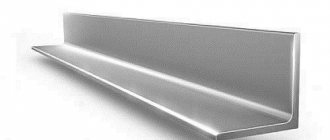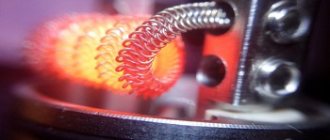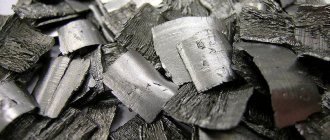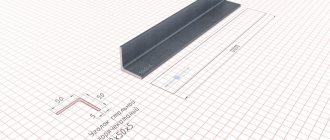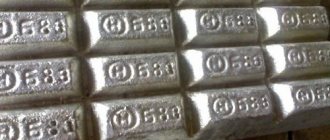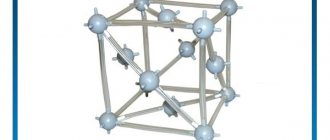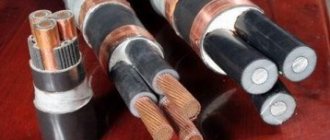Sitemap Contacts Home page
- About the company Tatkrepezh, Kazan
- Bashmetiz Ufa
- MetizUral, Kurgan
- News
- Gallery of objects
- Fasteners catalog
- GOST standards
- Weight of bolts, nuts and washers
- Tatkrepezh, Kazan
- Search
Home » Bolt Weight » Weight of High Strength Bolts Nuts and Washers
Tightening torque of high-strength bolt M22 40x "select"
Determination of the tension of a high-strength bolt is carried out in accordance with the following points:
- The torque (tightening torque) (N×m) when tensioning high-strength M24 bolts by the nut should be determined by the formula:
- Mkr = 22×R×K; Where
- P=220 kN - controlled bolt tension force (22.16t) 7700 kg/cm² (design resistance of steel 40X)
- 0.95 — Working conditions coefficient
- 3.03 calculated bolt area by net cross-section
- K-twisting coefficient (taken from the manufacturer’s certificate data). So, with a twist coefficient of 0.175, the torque is equal to Mcr = 847 N×m. (86.4 kg×m). When tensioning high-strength bolts by their head, the torque should be increased by 5%.
- Dissolution. At the specified length, weld during installation after welding the belts and tightening the high-strength bolts to 50% of the controlled force.
- The number of high-strength bolts, nuts and washers must be increased by 2% (taking into account possible losses).
- Processing of contact surfaces of connections on high-strength bolts is sandblasting.
- Steel grade of high-strength bolts 40x "select"
Weight of different types of bolts
A bolt with a hexagon head and full screw thread (GOST 7798-70) is the most popular fastener in the construction and engineering industries, as well as when assembling furniture or repairing it. The bolt is made from stainless and carbon steel, and it is also possible to make it from brass. It has a foreign analogue according to DIN 933.
The mass of one bolt in grams depends on the size of the cap, its shape and the length of the bolt. The material also affects this indicator. The indicators below show how diverse hardware exists, and what their weight may be in grams:
- M6 – 4.71, M6x14 – 5.52, M6x16 – 5.93, M6x20 – 6.74, M6x25 – 7.87, M6x30 – 8.98, M6x35 – 10.09, M6x40 – 11.2, M6x45 – 12.31, M6x50 – 13.42, M6x55 – 14.53, M6x60 – 15.64, M6x65 – 16.76, M6x70 – 17.87, M6x75 – 18.98, M6x80 – 20.09, M6x85 – 21, 2, M6x90 – 22.31;
- M8x10 – 9.624, M8x14 – 11.08, M8x16 – 11.8, M8x20 – 13.25, M8x25 – 15.07, M8x30 – 17.35, M8x35 – 19.32, M8x40 – 21.3, M8x45 – 23, 27, M8x50 – 25.25, M8x55 – 27.22, M8x60 – 29.2, M8x65 – 31.17, M8x70 – 33.14, M8x75 – 35.12, M8x80 – 37.09, M8x85 – 39.07, M8x90 – 41.04, M8x95 – 43.02, M8x100 – 44.99;
- M16 – 68, M16x30 – 83, M16x40 – 97, M16x50 – 113, M16x60 – 129, M16x70 – 145, M16x80 – 161, M16x90 – 176, M16x100 – 192.
A bolt with a reduced hexagon-shaped head (GOST 7796-70) is used for fastening structures for which the height of the head is important
For production, steel 10, 20, 35, 35Х, 40Х, 30ХР is used, accuracy class - B. Weight 1 pc. in grams:
- M10x10 – 13.57, M10x14 – 15.85, M10x16 – 16.99, M10x20 – 19.26, M10x25 – 22.11, M10x30 – 24.95, M10x40 – 31.25, M10x50 – 37.42, M10x60 – 43.59, M10x70 – 49.76, M10x80 – 55.93, M10x90 – 62.1, M10x100 – 68.27;
- M12 – 25.09, M12x16 – 26.73, M12x20 – 30.01, M12x30 – 38.21, M12x40 – 47.03, M12x50 – 55.92, M12x60 – 64.8, M12x70 – 73.69, M12x80 – 82.57, M12x90 – 91.46, M12x100 – 1003;
- M20x25 – 111, M20x30 – 123, M20x40 – 146, M20x50 – 169, M20x60 – 194, M20x70 – 218, M20x80 – 243, M20x90 – 268, M20x100 – 293
Eye bolts (GOST 4751-73) are used for lifting and rigging operations. The main feature of the hardware: instead of a head there is a ring for fastening the cable. Steel for production – C15E. It has a foreign analogue according to DIN 580. One eye bolt has the following weight:
- M8 – 50 g;
- M10 – 120 g;
- M16x20 – 310 g;
- M20x24 – 500 g;
- M24x29 – 870 g.
It is more convenient to give the weight of larger hardware in kilograms:
- M30x37 – 1.58;
- M36x43 – 2.43;
- M42x50 – 3.72;
- M48x52 – 5.54;
- M56x60 – 8.09.
Assembled butt bolts (GOST 11530-93) - hardware with a round head and an oval headrest - are used for joining railway rails. One butt bolt weighs in grams:
- M22x135 – 448;
- M24x150 – 585;
- M27x130 – 696;
- M27x160 – 818.
The embedded bolt (GOST 16017-79) is intended for connecting metal pads or installing rails on a reinforced concrete base. The embedded bolts are manufactured in 2 standard sizes, their weight in grams:
- M22x175 – 635;
- M22x225 – 1350.
Anchor bolts (GOST 24379-80) are used to fasten any structure to a supporting base. Weight of one anchor:
- M12x300 – 350, M12x400 – 440 g;
- M16x300 – 660, M16x600 – 1130, M16x900 – 1600, M16x1000 – 1730 g;
- M20x400 – 1.32, M20x500 – 1.57, M20x900 – 2.55, M20x1000 – 2.8 kg;
- M24 – 2.35, M24x1000 – 4.13, M24x1500 – 5.9, M25x1700 – 6.61 kg;
- M48x900 – 17.41, M48x1000 – 18.83, M48x1500 – 25.93, M48x2000 – 33.03 kg.
High-strength M24 bolts (40x "select")
High-strength bolt M24 - dimensions - stroyone
An example of a symbol for a bolt M24×130 (version 1) with a thread diameter d= 24 mm, with a turnkey size S=36 mm, length L= 130 mm, with a large thread pitch with a tolerance range of 6g, strength class 5.8, without coatings
Bolt M24 - 6gx130.110 GOST 22353-77*
| Nut weight (kg) | 0,171 | Thickness of the package with the length of a high-strength bolt M24 | ||
| Washer weight (kg) | 0,0758 | |||
| High strength M24 bolt | Bolt length(mm) | Bolt Weight (kg) | Set weight (kg) | |
| M24×60 | 60 | 0,367 | 0,6896 | — |
| M24×65 | 65 | 0,386 | 0,7086 | 14 — 24 |
| M24×70 | 70 | 0,404 | 0,7266 | 19 — 29 |
| M24×75 | 75 | 0,421 | 0,7436 | 24 — 34 |
| M24×80 | 80 | 0,438 | 0,7606 | 29 — 39 |
| M24×85 | 85 | 0,456 | 0,7786 | 34 — 44 |
| M24×90 | 90 | 0,473 | 0,7956 | 39 — 49 |
| M24×95 | 95 | 0,491 | 0,8136 | 44 — 54 |
| M24×100 | 100 | 0,508 | 0,8306 | 55 — 59 |
| M24×105 | 105 | 0,525 | 0,8476 | 55 — 64 |
| M24×110 | 110 | 0,543 | 0,8656 | 60 — 69 |
| M24×115 | 115 | 0,56 | 0,8826 | 65 — 74 |
| M24×120 | 120 | 0,578 | 0,9006 | 70 — 79 |
| M24×125 | 125 | 0,595 | 0,9176 | 75 — 84 |
| M24×130 | 130 | 0,612 | 0,9346 | 80 — 89 |
| M24×140 | 140 | 0,646 | 0,9686 | 90 — 99 |
| M24×150 | 150 | 0,682 | 1,0046 | 100 — 109 |
| M24×160 | 160 | 0,714 | 1,0366 | 110 — 119 |
| M24×170 | 170 | 0,748 | 1,0706 | 120 — 129 |
| M24×180 | 180 | 0,783 | 1,1056 | 130 — 139 |
| M24×190 | 190 | 0,818 | 1,1406 | 140 — 149 |
| M24×200 | 200 | 0,853 | 1,1756 | 150 — 159 |
| M24×220 | 220 | 0,922 | 1,2446 | 170 — 179 |
| M24×240 | 240 | 0,992 | 1,3146 | 190 — 199 |
| M24×260 | 260 | 1,061 | 1,3836 | 210 — 219 |
| M24×280 | 280 | 1,131 | 1,4536 | 230 — 239 |
| M24×300 | 300 | 1,2 | 1,5226 | 250 — 259 |
M16 bolt wrench dimensions (conditions for the possibility of tightening the nut)
For prefabricated keys
Turnkey location according to GOST 2839-80 – stroyone
For keys according to GOST 2839-80
Prefabricated space – stroyone.com
Dimensions in mm
| Dimensions | For keys according to GOST 2839-80 | For prefabricated keys |
| Dmin | 45 | 23 |
| Amin | 30 | 32 |
| Bmin | 35 | 28 |
| Cmin | 38 | 19 |
| Emin | 25 | 27 |
| Fmin | 12 | — |
| Gmin | — | 34 |
How to calculate?
If you buy 10-15 bolts, you won't need to know their weight, but if you need a large quantity, it will be easiest to place an order by weight: in kilograms or grams.
You can also calculate the number of bolts available. To do this, you need to know how much one bolt weighs in theory, and have scales available.
To convert the weight of bolts from kg to pieces, you need to use the table of the weight of fasteners of different parameters. The calculation is based on the theoretical weight of one bolt based on the GOST standard. You need to divide the total weight by the weight of one bolt. Such calculations will be considered approximate, since the weight of the bolt is theoretical. When making calculations, it is also worth considering that different grades of steel are used for the manufacture of hardware, and accordingly, the strength class will also be different. To facilitate the counting process, there are special online calculators on the Internet that will help convert units into kilograms and vice versa.
Briefly about deciphering the main symbols
Any fastener has its own designation, consisting of a set of letters and numbers that is incomprehensible at first glance. Let's look at what the “cipher” consists of:
- Name of fastener – Bolt,
- Accuracy class - A, B, C, where A is the most accurate, is indicated if there is no further reference to GOST.
- Bolt design (special design features) – from 1 to 4,
- Type of thread: M - metric, K - conical and Tr - trapezoidal,
- Thread diameter in mm,
- Thread pitch (only fine pitch is indicated for a specific diameter),
- The thread direction is indicated only to the left, since the right is the main one,
- Thread accuracy level 4 – 8 (fine – coarse),
- Length of hardware in mm,
- Strength class,
- Indication of the alloy used,
- Symbol for the type of coating – 1 – 13,
- Coating thickness in microdistrict,
- Type of standard for production.
The product marking contains the strength class of the material, the manufacturer's mark and the thread direction arrow. The strength class is determined by numbers. The first shows the maximum load, and the second shows the relationship between fluidity and strength indicators.
